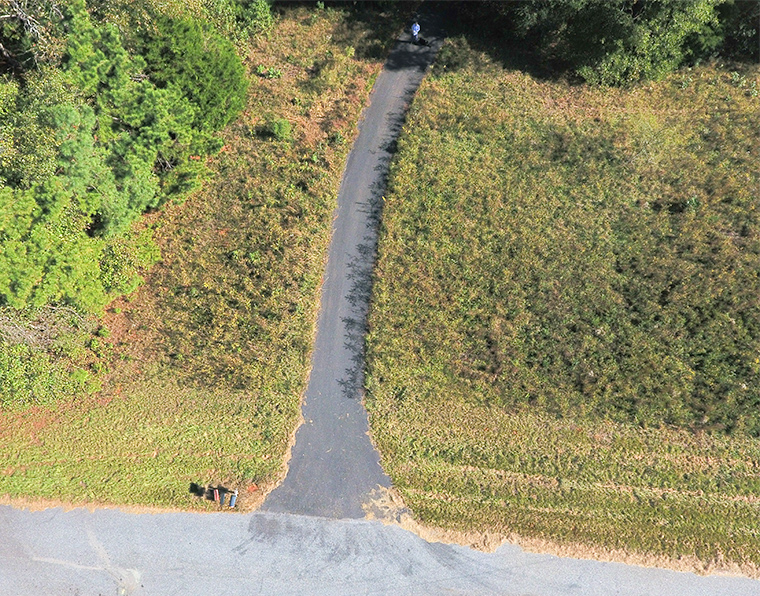
The photograph above was taken by my drone It shows our driveway with the mailboxes at the end near the main road. The white spot in the shade at the top of the photograph is me directing the drone. The field beside the driveway looks uniformly dull at this scale. The purpose of the post is to illustrate the different view one gets as the scale increases.
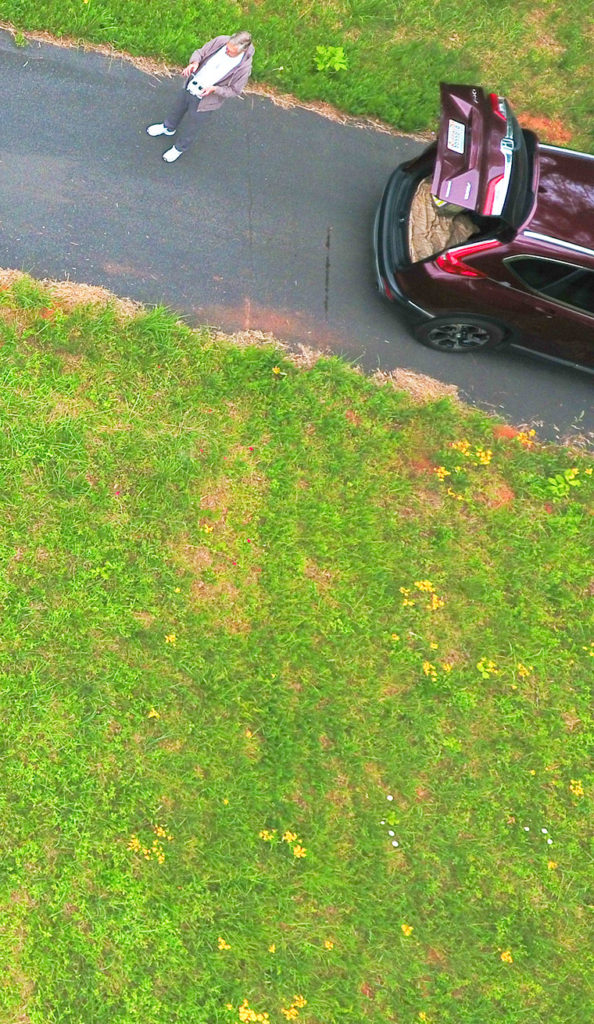
As the drone’s altitude is decreased, some structures bcome apparent in the field. We will concentrate on the yellow patches that can be seen at several spots in the image.
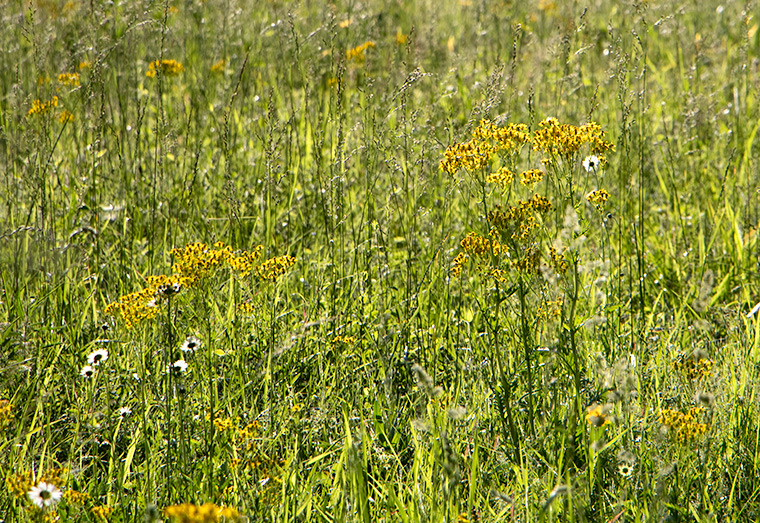
Seen from ground level, the field shows its varied structure. The yellow spots are revealed as lanky plants, and white-flowered daisies are also visible.
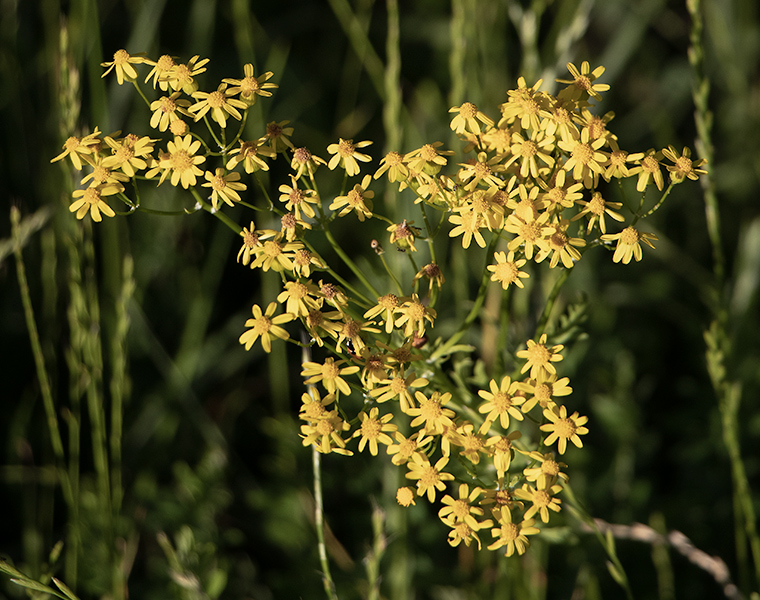
Flowers are clustered at the end of the stalks on our plant of interest.
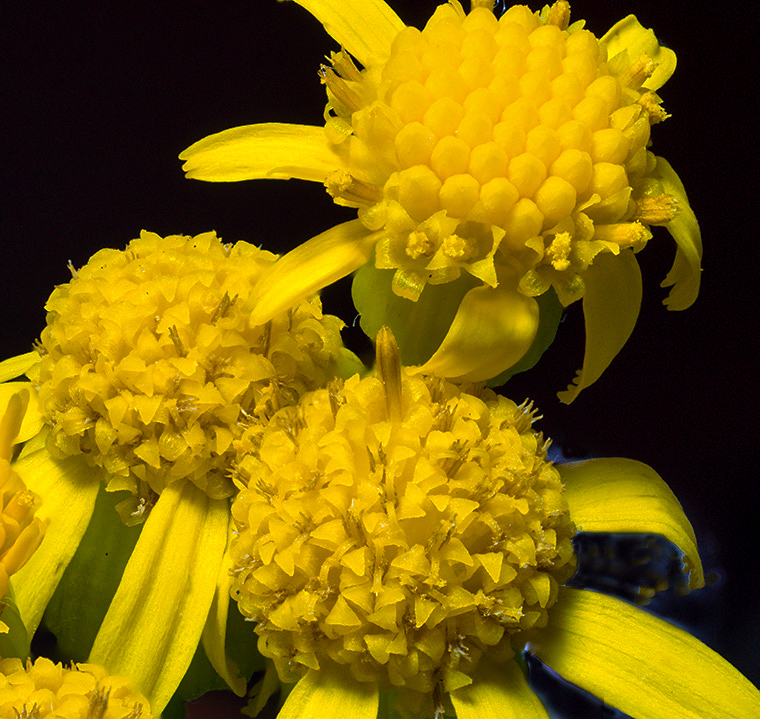
Closer inspection reveals that each structure is a group of flowers. The flowers are of two types. In the center, tightly clumped together, are many small flowers. These are called disk flowers, and each is equipped with both male and female organs (stamens and pistils). Around the outside, and looking for all the world like petals are a few more flowers that radiates out from the central flower cluster. These are the ray flowers and in this species they bear only female sexual organs.
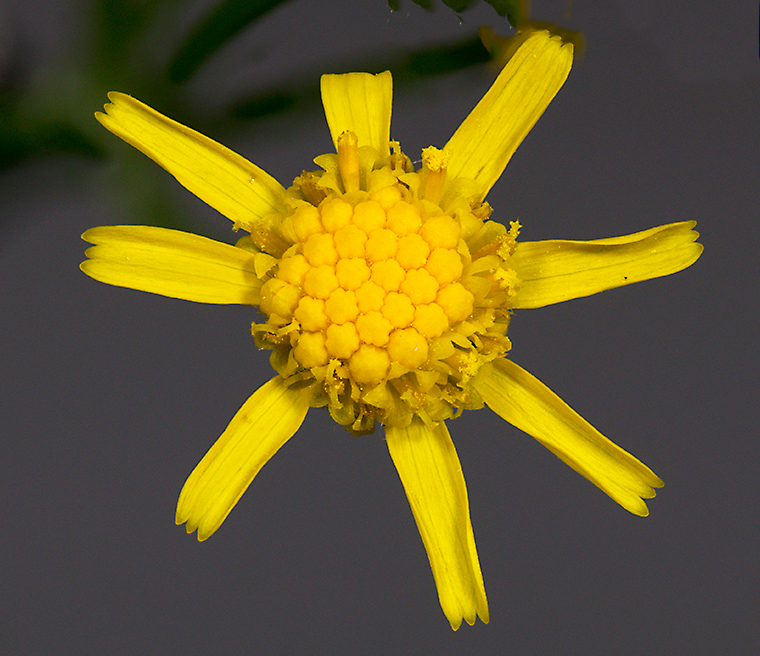
The photograph above shows some of the disk flower opened and ready to be pollinated. After pollination each disk flower will produce a seed. This basic structure of having many flowers in a tight group in each structure places this plant into the very large Aster plant family (Asteraceae or Compositae). Sunflowers, Daisies, Thistles, Dandelions, Goldenrods, and of course, Asters. are well-known members of this family. The species pictured here is a Ragwort, and I would have called it a species of Senecio. However, on consulting Linda Chafin’s recent book “Field Guide to the Wildflowers of Georgia and Surrounding States”, I see that this plant has now been placed in the genus Packera. I am not sure of the species, but P. anonyma seems likely,
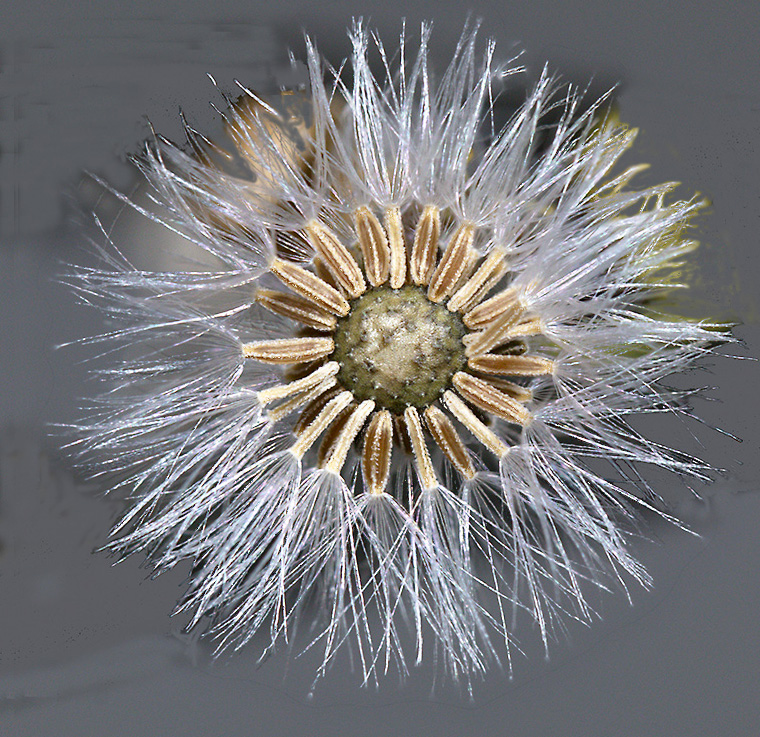
After pollination takes places each disk flower produces a single seed. Here I have brushed off some of the seeds from the globular seed head to show the structure underneath. Each seed is equipped with some down to facilitate its dispersal by the wind.
So you see, it pays to look at nature at all scales, Some things are only visible in a closer look.

Thanks Gary!